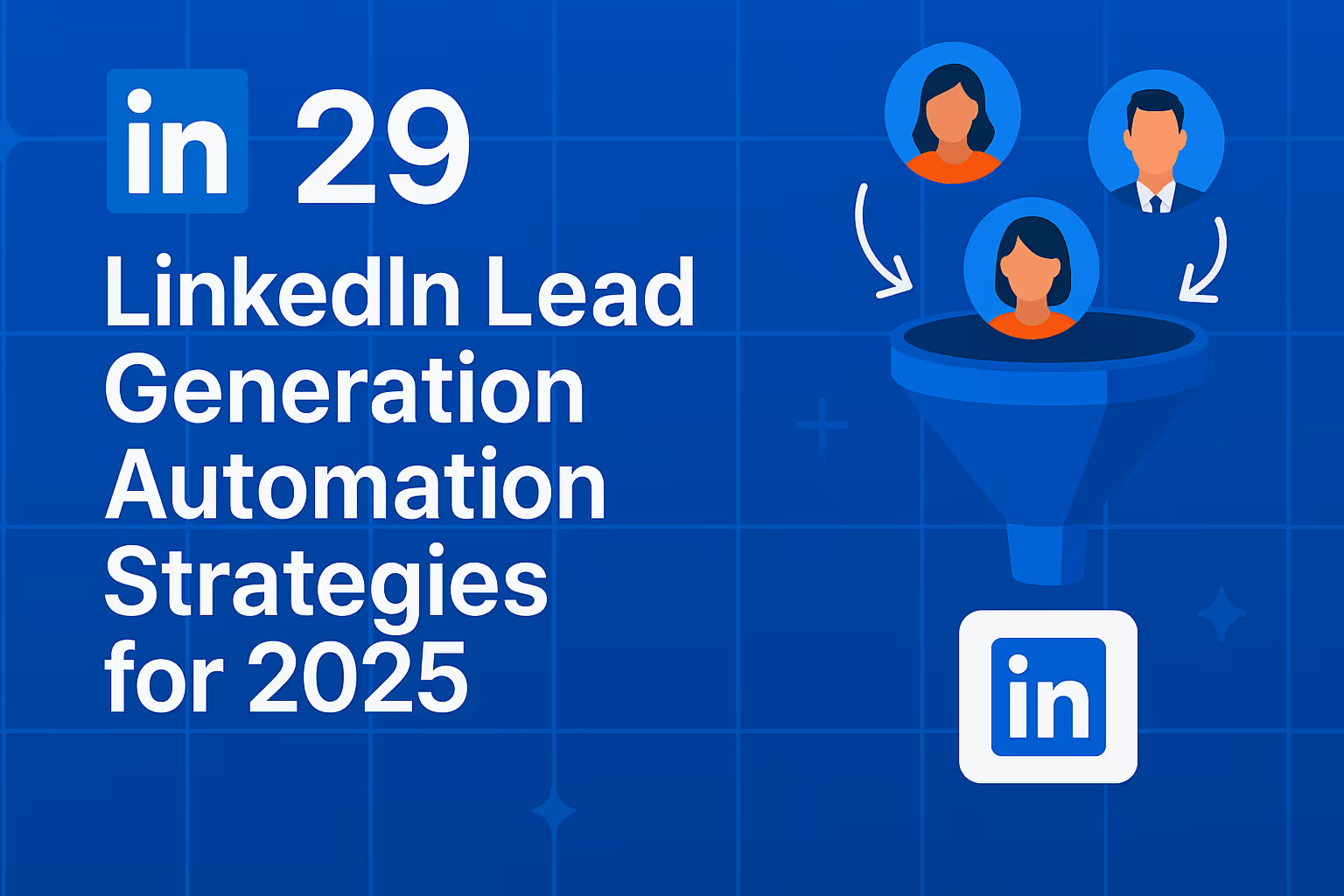Startup Scouting: A Comprehensive Guide to Finding and Partnering with Innovative Startups
In today’s rapidly evolving business landscape, the ability to identify and partner with promising startups has become a crucial competitive advantage. While 40% of Fortune 500 companies face potential replacement within the next decade, those mastering startup scouting are positioning themselves at the forefront of innovation. Many traditional businesses will die if they fail to adapt to technological change and innovation, as startups are changing the rules of the game and established companies risk being replaced. Startup scouting can inject new life into established companies by bringing in fresh ideas and innovative energy. This systematic approach to discovering, evaluating, and engaging with early-stage companies offers corporations access to cutting-edge technologies, fresh market perspectives, and the agility needed to thrive in dynamic markets.
The challenge lies not in recognizing the value of startup partnerships, but in developing scalable processes to identify the best startups among thousands of emerging companies worldwide. With global startup formation accelerating and innovation ecosystems expanding across emerging markets, corporations need sophisticated scouting methodologies to avoid missing transformative opportunities while efficiently allocating their resources. Startups represent a pivotal opportunity for corporations to access innovative ideas, drive transformational change, and stay competitive.
This comprehensive guide will explore proven frameworks for startup scouting, from initial discovery through successful integration, providing corporate innovation teams with the tools and strategies needed to build sustainable competitive advantages through external innovation partnerships.

What is Startup Scouting?
Startup scouting refers to the systematic process of identifying, evaluating, and engaging with early-stage companies that offer innovative solutions, disruptive technologies, or unique business models relevant to a corporation’s strategic interests. This practice serves as an early warning system for market disruptions and emerging technologies, enabling organizations to tap into external innovation before competitors recognize the opportunities.
The core purpose of startup scouting extends beyond simple technology acquisition. It functions as a radar for innovation, helping corporations understand market trends, identify potential partnerships, and access new talent pools. Keeping an eye on emerging startups and shifting market trends is essential for companies to spot opportunities early and stay ahead of the competition. By proactively seeking out high-potential startups, companies can support their business transformation initiatives while maintaining competitive advantages in fast-moving markets.
Modern startup scouting encompasses several key components that distinguish it from ad-hoc startup discovery. The scouting pipeline represents the ongoing flow of startups identified, vetted, and engaged through systematic processes. Deal flow measures the volume and quality of opportunities uncovered through scouting activities, while due diligence ensures rigorous assessment of each startup’s business viability, technology potential, and team capabilities.
Fortune 500 companies increasingly rely on startup scouting as a critical component of their innovation strategies. These organizations understand that internal research and development alone cannot keep pace with the rapid innovation occurring across global startup ecosystems. By establishing formal scouting programs, large corporations gain access to entrepreneurial thinking, agile methodologies, and breakthrough innovations that might take years to develop internally.
The evolution of startup scouting has transformed from informal networking at trade shows to sophisticated, data-driven processes leveraging artificial intelligence and global databases. This transformation enables corporations to scan thousands of startups across multiple geographies and technology verticals, identifying opportunities that align with specific innovation goals and strategic objectives.
The Strategic Value of Startup Scouting for Corporations
The compelling business case for startup scouting emerges from the accelerating pace of market disruption and the limitations of internal innovation alone. Research indicates that 40% of Fortune 500 companies face replacement risk within the next decade, primarily due to their inability to adapt to technological changes and evolving customer expectations. Startup partnerships provide a strategic mechanism for mitigating this risk while accessing innovations that would be challenging to develop internally.
Startups offer corporations access to cutting-edge technologies that often emerge from academic research, entrepreneurial experimentation, or niche market insights. These early-stage companies typically focus intensively on specific problem areas, developing specialized expertise and innovative approaches that complement corporate capabilities. The agile methodologies and rapid iteration cycles common in startup environments can inject fresh perspectives into established corporate processes.
The mutual benefits of corporate-startup relationships create compelling value propositions for both parties. While corporations gain access to innovation and new technologies, startups receive crucial resources including market expertise, distribution channels, regulatory guidance, and financial support. Integrating service offerings, such as consulting or operational support, further enhances these collaborations by helping startups scale and enabling corporations to maximize the value of their partnerships. This symbiotic relationship enables startups to scale more effectively while helping corporations stay at the forefront of technological advancement.
Strategic startup scouting enables companies to identify potential acquisition targets before they become widely known or expensive. Early identification of promising companies allows corporations to establish relationships, understand technology capabilities, and evaluate cultural fit before competitive bidding situations arise. This approach often results in more favorable acquisition terms and smoother integration processes.
Investment opportunities represent another significant value dimension of startup scouting. Corporate venture capital arms use scouting to identify investment targets that align with strategic objectives while potentially generating financial returns. These investments provide ongoing visibility into startup progress and market developments while maintaining strategic optionality for future partnerships or acquisitions.

Core Methods for Effective Startup Scouting
Successful startup scouting requires a multi-channel approach that combines technological tools with human expertise to maximize discovery coverage while maintaining evaluation quality. The four primary methods for startup discovery each offer unique advantages and limitations, making them most effective when used in combination rather than isolation. It is also crucial to establish a dedicated place—whether physical or digital—to centralize startup relationships, data, and processes, ensuring streamlined communication and effective collaboration.
Database and Directory Research
Comprehensive startup databases serve as the foundation for systematic scouting efforts, providing structured access to information about thousands of companies across global markets. Platforms like Crunchbase, PitchBook, and AngelList offer sophisticated filtering capabilities that enable scouts to identify startups based on funding stage, industry vertical, geographic location, and technology focus areas.
These platforms excel at providing quantitative data including funding history, team backgrounds, competitive landscapes, and growth metrics. Advanced filtering enables scouts to create targeted lists based on specific criteria such as Series A companies in artificial intelligence with European headquarters and recent partnerships with enterprise customers. The ability to track funding rounds, leadership changes, and product launches provides valuable signals about startup momentum and market validation.
However, database research faces limitations including data accuracy challenges and information overload. Many early-stage startups lack comprehensive database profiles, particularly stealth-mode companies or those in emerging markets. The sheer volume of available data can overwhelm scouting teams without clear search criteria and evaluation frameworks. Additionally, database information often lags behind real-time developments, potentially missing rapidly evolving opportunities.
Best practices for database research involve combining multiple platforms to create comprehensive startup landscapes while establishing clear search parameters aligned with strategic objectives. Successful scouts develop systematic approaches for data validation, cross-referencing information across sources and supplementing database insights with direct startup engagement and ecosystem intelligence.
Strategic Networking and Event Participation
High-value networking opportunities provide access to startup communities, ecosystem influencers, and early-stage companies that may not yet appear in mainstream databases. Industry conferences like TechCrunch Disrupt, Web Summit, and vertical-specific events offer concentrated access to hundreds of startups while enabling relationship building with venture capitalists, accelerator leaders, and startup founders. Startups and scouts who attend these networking events, trade fairs, or hackathons gain valuable insights and build essential connections that are difficult to achieve through virtual means alone.
Corporate innovation labs and accelerator demo days represent particularly valuable networking venues, as they showcase startups that have already undergone initial screening and development support. University spin-off programs provide access to cutting-edge research and entrepreneurial talent emerging from academic institutions. These environments often feature technologies and business models that are months or years ahead of broader market awareness.
The shift toward virtual and hybrid events following COVID-19 has expanded networking reach while creating new challenges for relationship building. Virtual platforms enable participation in global events without travel constraints, but they require adapted approaches for meaningful engagement and relationship development. Successful scouts balance virtual participation with strategic in-person presence at key events.
Building relationships with venture capitalists, angel investors, and startup ecosystem influencers multiplies scouting effectiveness by accessing their deal flow and market insights. These relationships provide early visibility into promising companies while offering validation of startup potential through experienced investor perspectives. Regular engagement with ecosystem stakeholders creates a network effect that continuously surfaces new opportunities.
Professional Scouting Consultants
External scouting expertise offers specialized capabilities and market coverage that may be challenging to develop internally. Large consulting firms like McKinsey Digital provide comprehensive market analysis and strategic guidance, while boutique agencies offer deep expertise in specific technology areas or geographic markets. These professionals bring established networks, proven methodologies, and objective perspectives to startup evaluation processes.
Consultant services typically include market mapping to identify all relevant players in specific technology areas, due diligence support for promising opportunities, and partnership facilitation to navigate complex corporate-startup negotiations. Specialized consultants often maintain ongoing relationships with startup ecosystems, providing continuous intelligence about emerging companies and market trends.
The cost-benefit analysis of external consultants depends on factors including internal scouting capabilities, required market coverage, and strategic importance of specific technology areas. Organizations with limited internal resources or those exploring new markets often find consultant expertise valuable for establishing initial scouting capabilities and market understanding.
Selection criteria for scouting consultants should emphasize industry expertise, track record of successful partnerships, geographic coverage, and cultural fit with corporate objectives. The most effective consultant relationships involve clear scope definition, success metrics, and knowledge transfer processes that build internal capabilities over time.

AI-Powered Scouting Platforms
Artificial intelligence transforms startup scouting by automating routine screening tasks while enhancing pattern recognition and trend analysis capabilities. AI-powered platforms can process vast amounts of data from multiple sources, identifying startups that match specific criteria while surfacing trends and connections that might escape human analysis.
Platforms like Novable combine artificial intelligence capabilities with human expertise to deliver comprehensive scouting solutions. These systems can analyze startup websites, social media activity, patent filings, and news coverage to assess company potential and market positioning. According to Novable, their AI-driven process can reduce candidate analysis time by up to 80%, double partnership validation speed, and accelerate closing in half the usual time. However, while Novable’s curated, human‑in‑the‑loop model ensures high reliability, some users note their underlying databases may lag in reflecting very new startups or rapidly evolving ventures.
For startup scouting that demands both freshness and precision, Leadspicker offers a compelling AI‑powered solution. Rather than relying on static directories, this platform constantly monitors real‑world indicators like LinkedIn activity, job postings, social signals, and more, to surface startups in real time, enriching each lead with meaningful context like founder details, company insights, and contact data. From sourcing to outreach, everything unfolds within one intuitive workflow: the AI crafts personalized messages, manages multi‑channel campaigns across LinkedIn and email, optimizes deliverability, integrates with CRMs, and delivers performance analytics. Leadspicker streamlines startup discovery and engagement with efficiency and flair, which makes it ideal for building dynamic, high‑quality prospect databases.
The key advantage of AI-powered scouting platforms is their ability to automate approximately 80% of routine tasks—freeing up human experts to focus on strategic evaluation, cultural fit, and relationship-building. They continuously monitor global startup ecosystems and alert teams when promising matches emerge or existing targets hit milestones.
These platforms excel at processing unstructured data, creating rich startup profiles that include financials, technology stacks, team expertise, and validation indicators. Advanced AI can detect nascent trends and foresee startup potential based on both historical and real-time market data.
Still, human oversight remains vital—both to validate AI findings and ensure strategic alignment. Combining AI speed with human nuance yields the most effective scouting—especially when balancing freshness (like Leadspicker offers) with expert-validated quality (as Novable delivers).
The Three-Phase Startup Scouting Framework
A systematic approach to startup scouting requires structured phases that guide organizations from initial discovery through successful partnership implementation. This three-phase framework provides a scalable methodology that balances thoroughness with efficiency while ensuring alignment between scouting activities and strategic objectives.
Discovery Phase
The discovery phase establishes the foundation for effective startup scouting by defining clear objectives and search criteria that guide all subsequent activities. Organizations must first articulate their innovation goals, whether focused on digital transformation, sustainability initiatives, market expansion, or specific technology needs. These objectives determine the types of startups to target and the evaluation criteria for partnership potential.
Establishing comprehensive search criteria involves multiple dimensions including company stage, funding status, geographic focus, and technology maturity. Early-stage startups offer greater partnership flexibility but higher risk, while later-stage companies provide more validation but potentially higher costs and reduced availability. Geographic considerations balance local ecosystem advantages against global innovation opportunities.
The discovery process leverages multiple channels simultaneously to maximize coverage while avoiding blind spots that could result in missed opportunities. Ecosystem mapping creates comprehensive landscapes of relevant startups, competitors, and market trends within specific technology areas. This systematic approach ensures thorough coverage while identifying white spaces where innovation opportunities may be emerging.
Creating startup shortlists requires balancing quantity with quality to ensure sufficient options while maintaining manageable evaluation workloads. Best practices involve establishing initial screening criteria that filter for basic requirements such as technology relevance, team quality, and market potential. This approach creates focused lists of 20-50 startups for detailed evaluation rather than overwhelming teams with hundreds of potential opportunities.
Trend analysis during the discovery phase identifies emerging patterns and technologies that may not yet be widely recognized but could become significant opportunities. This forward-looking perspective enables organizations to engage with startups before they become highly sought-after or expensive partnership targets.
.jpg)
Evaluation and Piloting Phase
The evaluation phase applies rigorous assessment methodologies to shortlisted startups while testing collaboration potential through minimal viable partnerships. Comprehensive due diligence covers technology assessment, market validation, team evaluation, and financial health to understand startup capabilities and risks comprehensively.
Technology assessment evaluates the maturity, scalability, and differentiation of startup solutions while identifying potential integration challenges with existing corporate systems. This evaluation includes intellectual property analysis, competitive positioning review, and technical architecture assessment to understand implementation requirements and potential obstacles.
Market validation analysis examines customer traction, revenue growth, and competitive dynamics to assess startup commercial viability. This assessment includes customer reference calls, market size analysis, and competitive differentiation evaluation to understand the startup’s position within its target market and growth potential.
Team evaluation focuses on leadership quality, technical expertise, and cultural fit with corporate values and objectives. Assessment criteria include track record of key team members, advisory board strength, and organizational capabilities needed for scaling operations and managing corporate partnerships.
Developing minimal viable partnerships enables testing of collaboration potential before committing to larger initiatives. These pilot programs establish clear success metrics, timeline milestones, and resource requirements while providing both parties with experience working together. Successful pilots create confidence for larger partnerships while unsuccessful tests provide valuable learning without significant resource commitment.
Risk assessment methodologies identify potential challenges including intellectual property conflicts, competitive issues, regulatory compliance requirements, and integration complexity. This analysis enables informed decision-making about partnership structure and risk mitigation strategies.
Adoption and Integration Phase
The adoption phase transitions successful pilot programs into full-scale partnerships while ensuring effective integration with existing corporate innovation systems. This phase requires careful planning to maintain startup agility while achieving corporate objectives and compliance requirements.
Scaling successful partnerships involves defining long-term collaboration models that align with both startup growth plans and corporate strategic objectives. Options include joint ventures, strategic investments, technology licensing, and acquisition depending on partnership goals and startup characteristics. Each model offers different benefits and challenges that must be evaluated against strategic priorities.
Integration planning addresses technical, operational, and cultural challenges that commonly arise when combining startup innovations with corporate systems and processes. Successful integration requires dedicated resources, clear communication protocols, and flexibility to adapt approaches as partnerships evolve.
Corporate innovation management systems must accommodate startup partnerships while maintaining governance and compliance requirements. This balance often requires modified approval processes, dedicated partnership teams, and cultural changes that support entrepreneurial thinking within corporate environments.
Long-term relationship management ensures ongoing value creation from startup partnerships while providing support for startup growth and development. Regular performance reviews, milestone celebrations, and strategic planning sessions maintain alignment and momentum while identifying opportunities for expanded collaboration.
Essential Best Practices for Startup Scouting Success
Building startup-friendly corporate culture represents a fundamental requirement for successful scouting programs, as promising startups actively choose partners based on cultural compatibility and collaboration potential. Organizations must demonstrate genuine commitment to innovation, willingness to experiment, and respect for entrepreneurial approaches to problem-solving.
Establishing clear decision-making processes prevents bureaucratic delays that can derail startup partnerships and damage corporate reputation within startup ecosystems. Successful organizations create dedicated fast-track approval processes for startup partnerships while maintaining necessary governance and compliance requirements. These processes typically involve cross-functional teams with decision-making authority and clear escalation paths for complex situations.
Maintaining active relationships with startup ecosystem stakeholders including accelerators, venture capitalists, and innovation hubs creates continuous deal flow while building reputation as a preferred corporate partner. Regular engagement through advisory roles, speaking opportunities, and event participation demonstrates commitment to ecosystem development while providing early access to emerging opportunities.
Continuous ecosystem monitoring enables early identification of trends and opportunities while maintaining awareness of competitive activities and market developments. This monitoring combines automated tools with human intelligence to track startup formation, funding activities, technology developments, and partnership announcements across relevant markets.
Measuring scouting return on investment requires comprehensive metrics that capture both quantitative outcomes and strategic value creation. Key performance indicators include number of startups identified, engagement rates, conversion to partnerships, time-to-decision, and measurable business impact from successful collaborations. These metrics guide resource allocation decisions and program optimization efforts.
Resource allocation across discovery channels should reflect the relative effectiveness of different approaches while maintaining diversity to avoid blind spots. Organizations typically allocate resources based on channel productivity, strategic importance of covered markets, and availability of internal expertise. Regular analysis of channel performance enables optimization while maintaining comprehensive market coverage.
Talent development ensures internal teams possess the skills and knowledge needed for effective startup engagement. This development includes training in startup evaluation methodologies, partnership structuring, and cultural competencies needed for successful collaboration with entrepreneurial organizations.
-min.jpg)
While technology and data-driven platforms are essential tools in the scouting process, human interactions remain irreplaceable when it comes to evaluating startups. Scouts who engage directly with startup teams gain valuable insights into the company’s culture, values, and character—factors that are often invisible in databases or reports. These personal connections allow scouts to ask probing questions, assess the team’s ability to innovate, and gauge their readiness to adapt to new challenges.
Face-to-face meetings, video calls, and informal conversations at events all play a vital role in building trust and understanding. Through these interactions, scouts can identify not only the technical potential of a startup but also the passion, resilience, and vision of its founders and team members. This deeper level of evaluation helps scouts determine whether a startup is the right fit for a partnership and whether its values align with those of the scouting company.
Moreover, human interactions enable scouts to spot early warning signs or hidden opportunities that might not be evident through data alone. By combining the strengths of technology, data analysis, and personal engagement, scouts can create a more comprehensive and effective startup scouting process—one that balances objective evaluation with the nuanced understanding that only human relationships can provide.
Overcoming Common Challenges in Startup Scouting
Startup scouting is a dynamic and often complex process, with several challenges that scouts must navigate to identify and partner with the best startups. One of the most significant hurdles is sifting through hundreds or even thousands of potential candidates to find those with the greatest promise. To address this, scouts need to establish clear criteria for evaluating startups, focusing on factors such as technology innovation, market potential, and the strength of the founding team.
Another common challenge is building effective relationships with startups, which requires a deep understanding of their unique needs, values, and business goals. Scouts must be prepared to adapt their approach as market conditions and technologies evolve, ensuring that their scouting process remains relevant and effective. This means continuously refining evaluation methods, staying informed about emerging trends, and being open to new ways of engaging with startups.
Scouts also face the challenge of maintaining objectivity while developing close relationships with startup teams. Balancing personal connections with rigorous evaluation is essential to making sound decisions. By being aware of these challenges and proactively developing strategies to overcome them, scouts can increase their chances of success, identify the most promising startups, and create valuable partnerships that drive innovation and growth.
Measuring Success: KPIs and Impact Assessment
To ensure that startup scouting efforts deliver real value, it’s essential to measure success using clear key performance indicators (KPIs) and impact assessments. Scouts should establish metrics that reflect both the quantity and quality of their activities—such as the number of startups identified, the strength of relationships built, and the value created through partnerships and collaborations.
Evaluating the long-term impact of scouting activities is equally important. This includes assessing the potential for innovation, business growth, and revenue generation resulting from partnerships with startups. By leveraging data and analytics, scouts can track the effectiveness of their process, identify areas for improvement, and optimize the allocation of resources.
Regularly reviewing KPIs and outcomes allows scouting teams to refine their strategies, ensuring that their efforts remain aligned with the company’s innovation goals. Ultimately, a data-driven approach to measuring success not only demonstrates the value of scouting activities but also supports continuous improvement and greater impact in the rapidly evolving world of startup innovation.
Future Trends and Strategic Considerations
.jpg)
The evolution of startup scouting continues accelerating with emerging technologies that enhance discovery capabilities while expanding the complexity of global innovation ecosystems. Predictive analytics platforms increasingly leverage machine learning algorithms to identify startups with high success probability before they achieve widespread recognition, enabling corporations to establish relationships during optimal timing windows.
Blockchain-based startup verification systems promise to address data accuracy challenges that currently complicate scouting efforts. These systems could provide tamper-proof records of startup achievements, partnerships, and milestones while enabling more reliable assessment of company claims and progress. Such verification systems would particularly benefit early-stage startup evaluation where traditional due diligence information may be limited.
Global startup ecosystem shifts require adaptation of scouting strategies to capture opportunities emerging in Southeast Asian, African, and Latin American innovation hubs. These regions increasingly produce startups addressing unique market needs while developing innovative approaches that could have global applications. Successful scouting programs must balance resource allocation between established ecosystems and emerging innovation centers.
Industry 4.0 implications transform the types of startups that corporations seek to identify and partner with. The convergence of Internet of Things, artificial intelligence, and sustainability technologies creates new categories of innovation opportunities while requiring updated evaluation criteria and partnership models. Organizations must adapt their scouting frameworks to address these evolving technology landscapes.
Scaling scouting programs to manage increasing startup volumes requires sophisticated technology platforms and organizational capabilities. As global startup formation continues accelerating, successful organizations must develop systems that can process thousands of opportunities while maintaining evaluation quality and relationship management effectiveness.
Validation of use cases becomes increasingly important as corporations gain experience with startup partnerships and develop more sophisticated understanding of collaboration models that create value. This validation requires systematic analysis of partnership outcomes, identification of success patterns, and continuous refinement of scouting criteria and evaluation methodologies.
The future of startup scouting will likely feature increased automation of routine tasks while emphasizing human expertise for strategic evaluation and relationship building. Organizations that successfully balance technological efficiency with human insight will create sustainable competitive advantages through superior startup partnership capabilities.
As startup ecosystems continue globalizing and innovation cycles accelerate, the organizations that master systematic startup scouting will position themselves to thrive in an increasingly dynamic business environment. The frameworks and methodologies outlined in this guide provide the foundation for building these critical capabilities while adapting to evolving market conditions and emerging opportunities.
Success in startup scouting ultimately depends on combining systematic processes with entrepreneurial thinking, leveraging technology while maintaining human relationships, and balancing thorough evaluation with decisive action. Organizations that commit to developing these capabilities will discover that startup partnerships become a sustainable source of competitive advantage in an innovation-driven economy.
For support or inquiries about startup scouting, you can contact us here to learn more about how we can help your organization succeed.









